Tobiko is a tiny, vibrant orange fish roe found in Japanese cuisine. If you’ve had sushi, you’ve seen these crunchy little pearls. They add a burst of flavor and texture. I love using tobiko in sushi and other dishes for a boost of umami and crunch.
In this guide, I’ll cover everything about tobiko. You’ll learn what it is, how to use it, and how to make a simple dish at home. Whether you love sushi or are curious about this ingredient, you’re in for a treat!
Table of Contents
What Is Tobiko?
Tobiko is the Japanese word for flying fish roe. These tiny eggs come from flying fish, mainly in Japan, Taiwan, and Iceland. They are naturally bright orange-red. But, you can also find them in black, green, or red, depending on the flavor.
Why Is Tobiko So Popular?
- Crunchy Texture: Tobiko is crunchy, unlike caviar, which is softer.
- Mild Umami Flavor: It tastes slightly salty, smoky, and sweet, making it great for sushi.
- Colorful Presentation: Its vibrant colors make any dish look appealing.
- Affordable Alternative to Caviar: Tobiko is cheaper than caviar but offers a similar experience.
Ingredients Needed for a Tobiko Dish
Here’s what you need for a simple yet tasty tobiko dish at home:
| Ingredient | Quantity |
|---|---|
| Tobiko (flying fish roe) | ½ cup |
| Sushi rice (cooked) | 1 cup |
| Nori (seaweed sheets) | 2 sheets |
| Soy sauce | 2 tbsp |
| Wasabi | 1 tsp |
| Japanese mayonnaise | 1 tbsp |
| Cucumber (thinly sliced) | ½ cup |
| Avocado (sliced) | ½ avocado |
| Sesame seeds | 1 tsp |
| Green onions (finely chopped) | 2 tbsp |
These ingredients will help you make a tasty tobiko sushi roll or an easy tobiko rice bowl.
How to Make a Delicious Tobiko Dish at Home
Making a tobiko dish at home is simple. I’ll show you a basic tobiko sushi roll recipe for beginners.
Step 1: Preparing the Ingredients
- Cook the sushi rice and season it with rice vinegar for that sushi taste.
- Slice the cucumber and avocado into thin strips.
- Lay out a bamboo sushi mat and cover it with plastic wrap to prevent sticking.
Step 2: Assembling the Sushi Roll
- Place a nori sheet on the sushi mat.
- Spread an even layer of sushi rice over the nori, leaving about an inch at the top.
- Layer cucumber, avocado, and a small amount of tobiko in the center.
- Carefully roll the sushi using the bamboo mat, applying gentle pressure to keep everything together.
Step 3: Adding Tobiko & Serving
- Once the roll is complete, use a sharp knife to cut it into bite-sized pieces.
- Spoon a generous amount of tobiko on top of each sushi piece.
- Garnish with sesame seeds and green onions.
- Serve with soy sauce, wasabi, and a drizzle of Japanese mayo for extra flavor.
This tobiko sushi roll is a fantastic way to enjoy the delicate, crunchy fish roe at home. It’s quick, fun to make, and a surefire way to impress your guests!
Best Ways to Enjoy Tobiko
Tobiko is incredibly versatile and can be used in various dishes beyond sushi. If you’re wondering how to incorporate it into your meals, here are some of the best ways to enjoy tobiko:
1. Tobiko Sushi Rolls
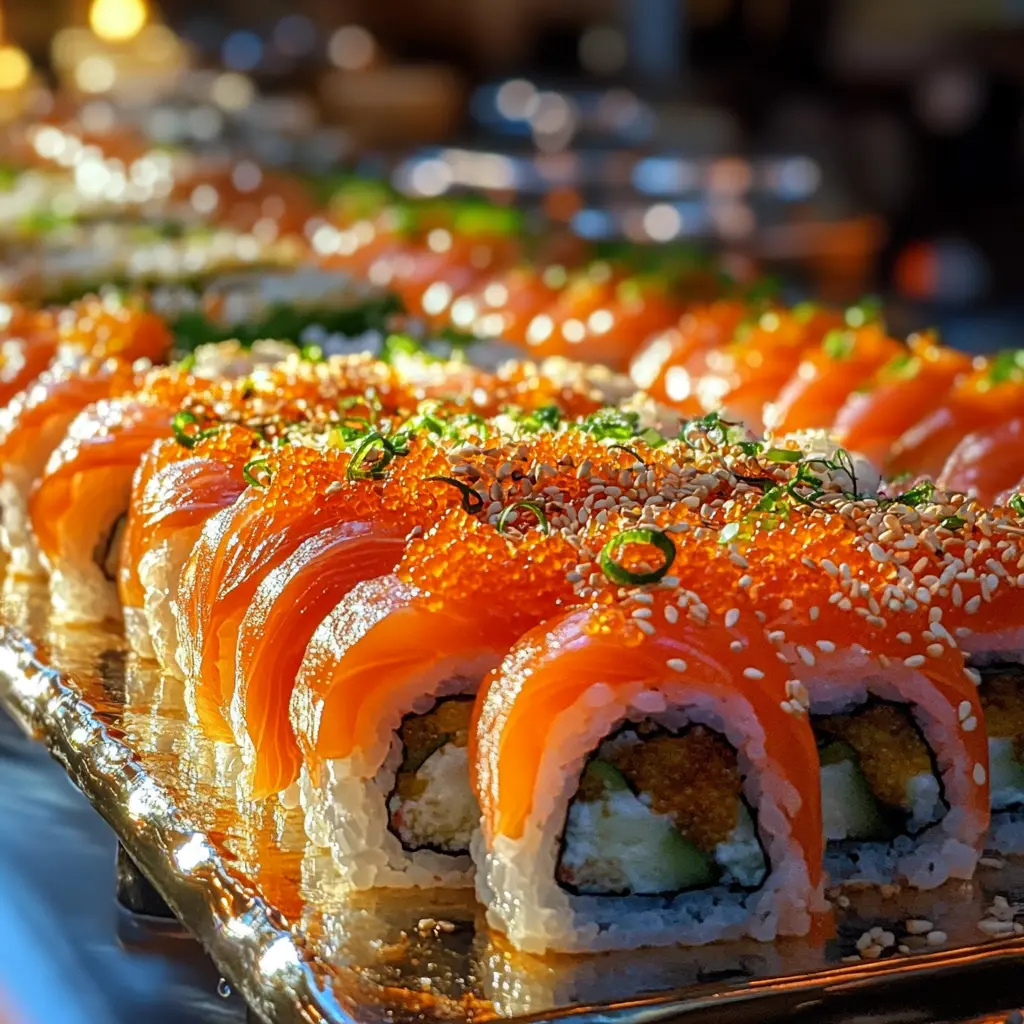
One of the most popular uses of tobiko is as a topping for sushi rolls. Whether sprinkled over California rolls, spicy tuna rolls, or dragon rolls, tobiko adds a burst of flavor and a crunchy texture. For a different twist, you might want to try this tobiko sushi recipe to elevate your sushi-making skills at home. It also enhances the presentation with its bright colors.
Pro Tip:
- Mix tobiko with Japanese mayonnaise and a touch of wasabi for a creamy tobiko topping that pairs perfectly with sushi.
2. Tobiko Pasta
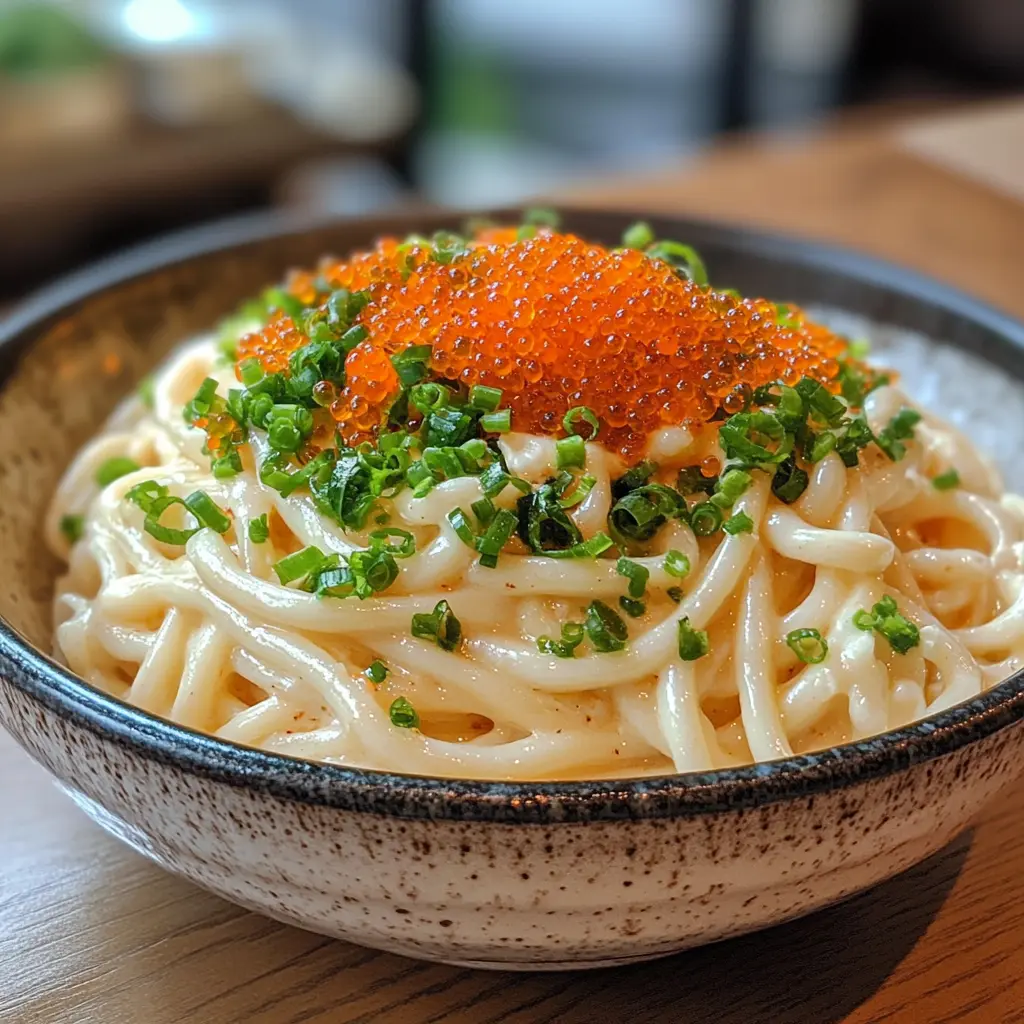
If you love seafood pasta, try adding tobiko for an extra depth of umami. For a similar rich and creamy experience, consider this shrimp scampi recipe without wine for a delicious seafood pasta alternative. A simple tobiko pasta dish can be made by mixing cooked pasta with:
- Japanese mayonnaise
- Soy sauce
- A splash of lemon juice
- A generous spoonful of tobiko
This creamy, savory sauce coats the pasta beautifully, and the tobiko provides a fun, popping texture in every bite.
Pro Tip:
- Garnish with green onions, shredded nori, or sesame seeds for an authentic Japanese-style finish.
3. Tobiko as a Topping for Other Dishes
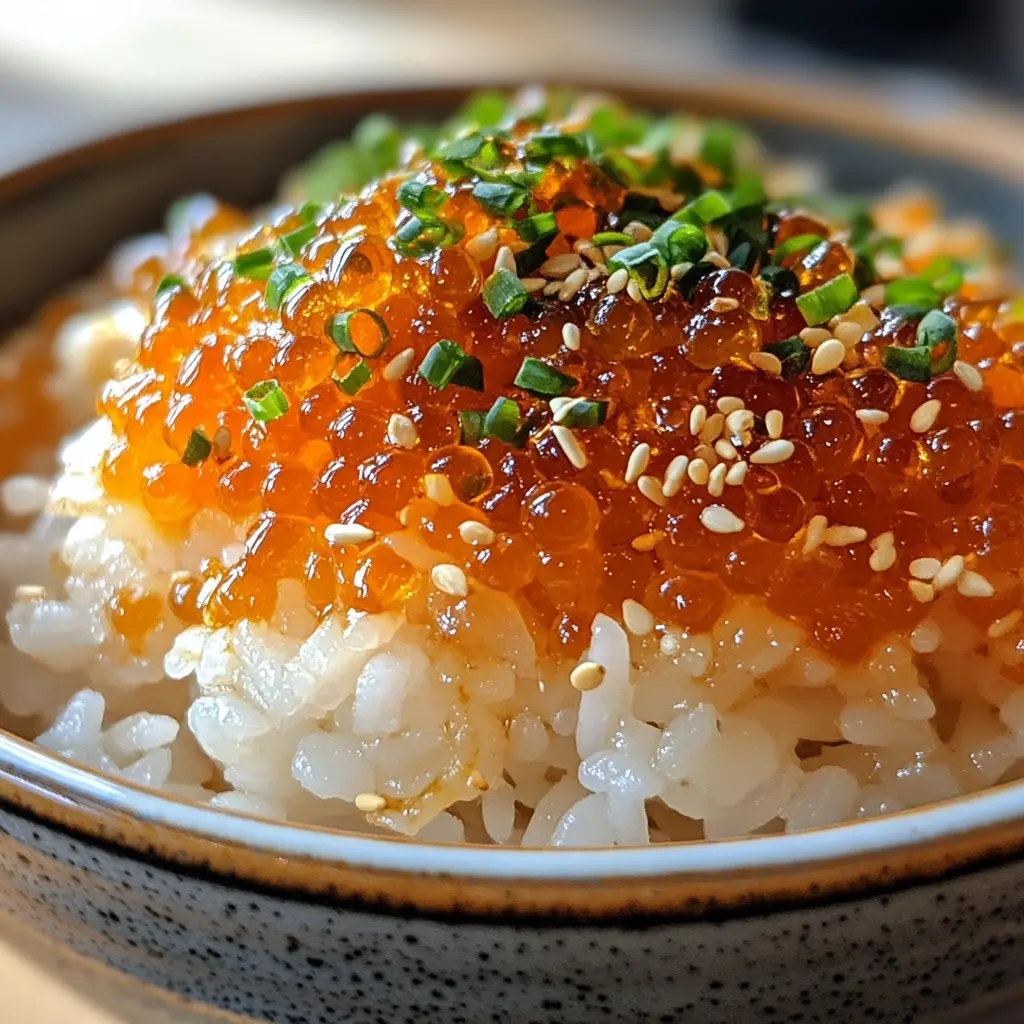
Beyond sushi and pasta, tobiko can be sprinkled over various dishes to enhance both flavor and texture. Some great options include:
- Rice bowls : Add tobiko over a warm bowl of rice with a drizzle of soy sauce and some pickled ginger.
- Seafood salads : Tobiko works well in crab or shrimp salads for an extra pop of color and crunch.
- Egg dishes : Mix it into scrambled eggs or an omelet for a unique, ocean-inspired breakfast.
Common Mistakes & Solutions
Even though tobiko is easy to use, people often make mistakes. To avoid these, check out tips for storing langostino tails. Here are some tips to help you avoid them:
❌ Mistake 1: Storing Tobiko Incorrectly
Tobiko is highly perishable and must be stored properly to maintain its freshness.
✔ Solution: Always store tobiko in the refrigerator at or below 32°F (0°C). For long-term storage, tobiko can be frozen in an airtight container.
❌ Mistake 2: Using Too Much Tobiko
Tobiko has a strong umami flavor, and adding too much can overpower the other ingredients.
✔ Solution: Use it as a garnish or mix it into dishes sparingly to maintain a balanced taste.
❌ Mistake 3: Buying Low-Quality Tobiko
Not all tobiko is of the same quality. Some may have artificial colors and flavors that reduce the authentic experience.
✔ Solution: Look for high-quality tobiko from trusted seafood markets or Japanese grocery stores. Fresh tobiko should have a bright color and firm texture, not mushy or overly salty.
Nutrition Facts
Tobiko is not only delicious but also nutritious. Here’s a breakdown of its health benefits:
| Nutrient | Amount (per 1 oz / 28g serving) |
|---|---|
| Calories | 20 kcal |
| Protein | 3g |
| Fat | 1g |
| Omega-3 Fatty Acids | High |
| Vitamin B12 | 15% of Daily Value |
| Sodium | 130mg |
Health Benefits of Tobiko:
✅ Rich in Omega-3s : Great for brain and heart health.
✅ Low in Calories : A light addition to any dish.
✅ Good Source of Protein : Helps build and repair muscles.
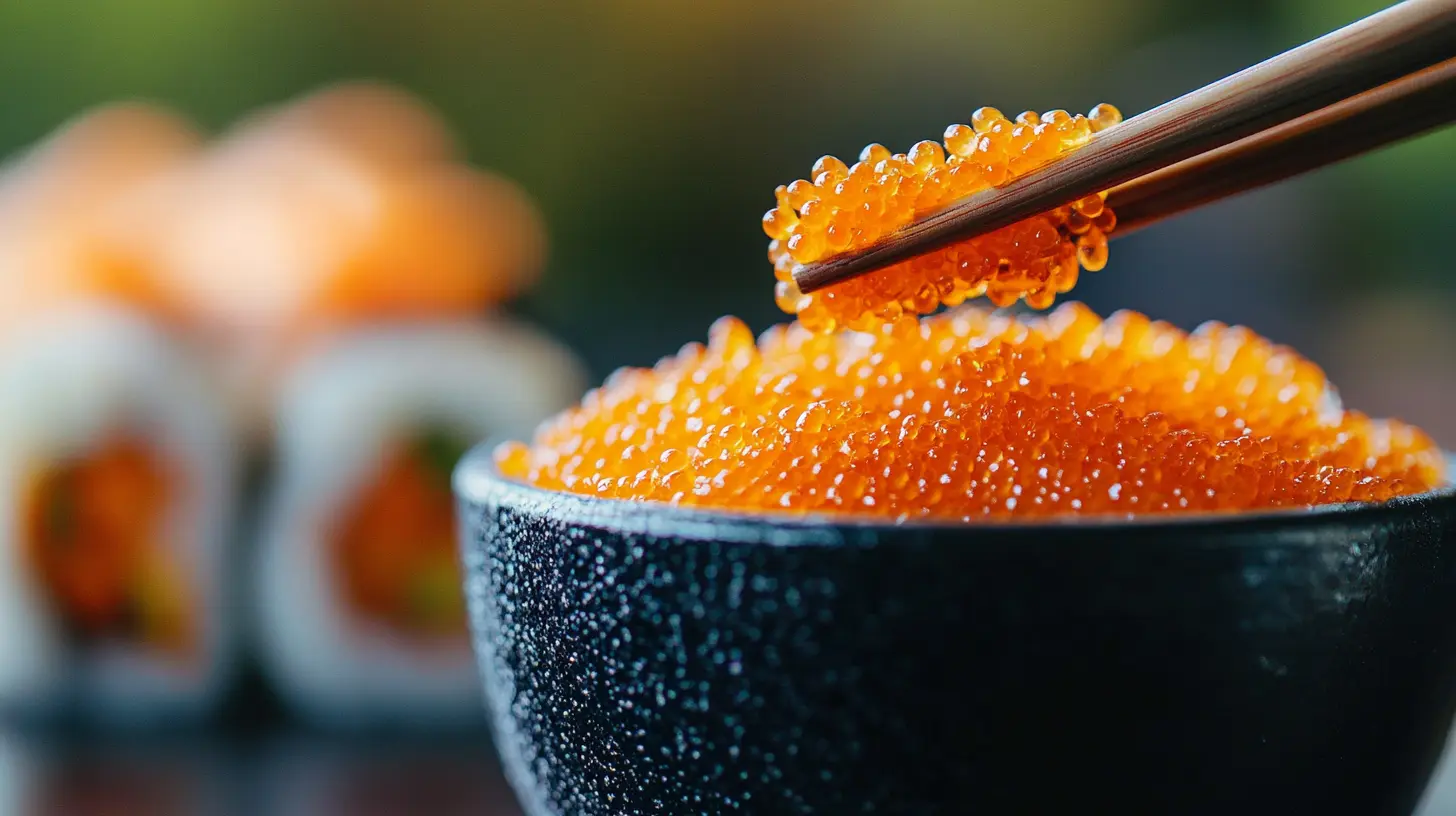
Tobiko: What It Is, How to Use It & Best Recipes
Ingredients
Equipment
Method
- Cook the sushi rice and season it with rice vinegar for that authentic sushi taste.
- Slice the cucumber and avocado into thin strips.
- Lay out a bamboo sushi mat and cover it with plastic wrap to prevent sticking.
- Place a nori sheet on the sushi mat and spread an even layer of sushi rice over it, leaving about an inch at the top.
- Layer cucumber, avocado, and a small amount of tobiko in the center.
- Carefully roll the sushi using the bamboo mat, applying gentle pressure to keep everything together.
- Once the roll is complete, use a sharp knife to cut it into bite-sized pieces.
- Spoon a generous amount of tobiko on top of each sushi piece.
- Garnish with sesame seeds and green onions.
- Serve with soy sauce, wasabi, and a drizzle of Japanese mayo for extra flavor.
FAQs About Tobiko
Tobiko is a fascinating ingredient, and many people have questions about its origins, uses, and differences from other types of fish roe. Here are the most common questions and their answers:gins, uses, and differences from other types of fish roe. Here are the most common questions and their answers:
1. What is tobiko made of?
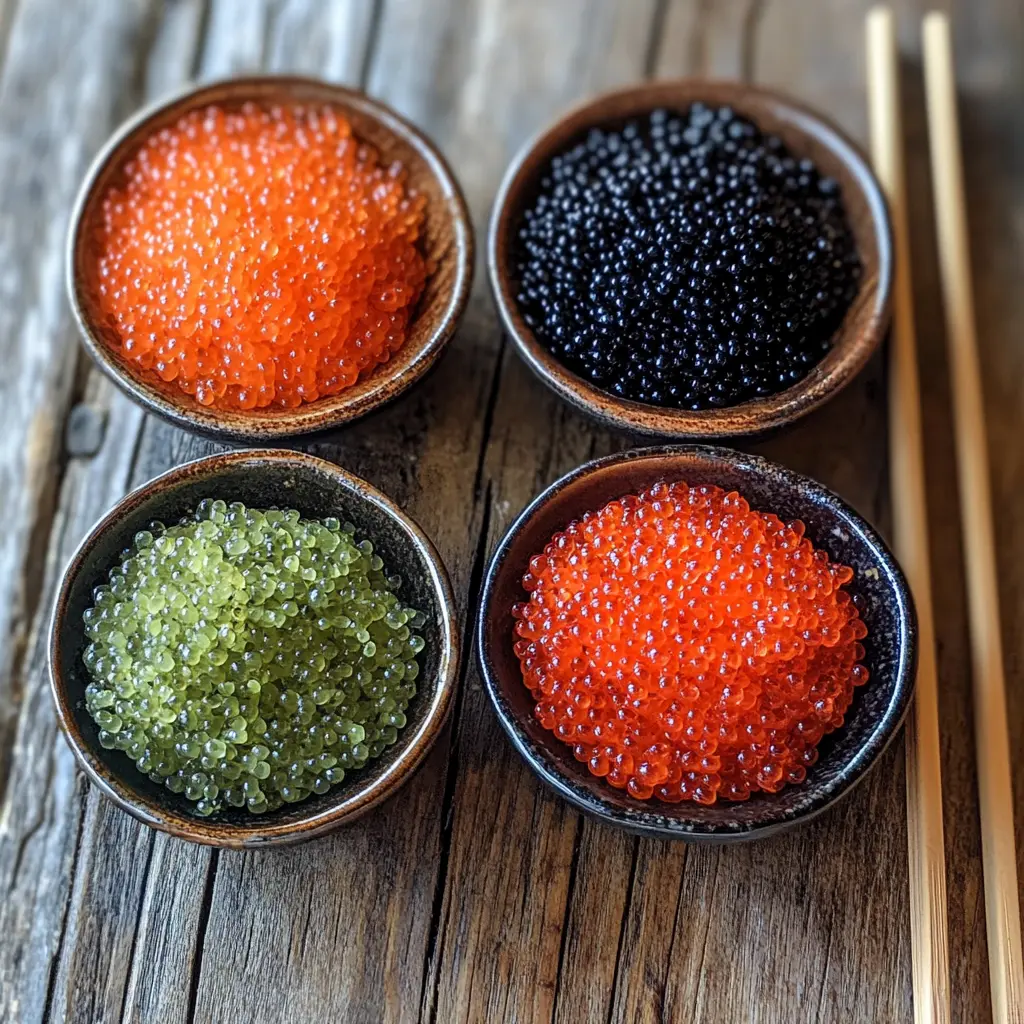
Tobiko comes in various flavors and colors.
Tobiko is made from the eggs of flying fish, primarily found in the waters of Japan, Taiwan, and Iceland. The natural color of tobiko is bright orange-red, but it can be enhanced with natural ingredients like:
- Wasabi (green tobiko)
- Squid ink (black tobiko)
- Beet juice (red tobiko)
- Yuzu citrus (yellow tobiko)
Unlike some other types of fish roe, tobiko is lightly cured with salt to enhance its shelf life and flavor.
2. What is the best way to eat tobiko?
Tobiko is best enjoyed raw as a topping for sushi, sashimi, or rice bowls. It’s popular in many ways, including:
- Sushi rolls : Tobiko is often used as a garnish for various sushi rolls.
- Nigiri sushi : A spoonful of tobiko is placed on top of a small bed of rice wrapped in seaweed.
- Rice bowls : Sprinkling tobiko over rice with soy sauce and sesame seeds enhances the dish.
- Japanese pasta dishes : Mixed into creamy sauces for added umami flavor.
3. What can you put tobiko on?
Tobiko is incredibly versatile! It can be used in a variety of dishes, including:
- Poke bowls : Adds extra texture to Hawaiian-style poke.
- Omelets and scrambled eggs : Enhances breakfast dishes with a salty crunch.
- Seafood salads : Combines well with crab, shrimp, and other seafood.
- Tofu and avocado appetizers : A delicate topping that pairs well with soft textures.
- Canapés and sushi-inspired snacks : Often used on small bites or crackers with cream cheese.
4. Why is tobiko cheaper than caviar?
Tobiko is more affordable than traditional caviar because of the differences in sourcing and production.
- Flying fish are abundant, making tobiko easier to harvest.
- Caviar comes from sturgeon, which are rarer and take longer to mature.
- Tobiko is smaller in size and does not require the same labor-intensive process as sturgeon roe.
While caviar is often seen as a luxury product, tobiko provides a delicious, budget-friendly alternative for those who love fish roe.
Conclusion
Tobiko is more than just a sushi topping—it’s a versatile, flavorful ingredient that adds both visual appeal and texture to various dishes. Whether you’re making sushi rolls, seafood pasta, or simple rice bowls, tobiko is a fantastic way to elevate your meals.
If you’ve never tried tobiko before, I highly recommend experimenting with it in different recipes. You’ll love its crunchy texture, mild umami taste, and vibrant color.
Do you have a favorite way to enjoy tobiko? Let me know in the comments!
